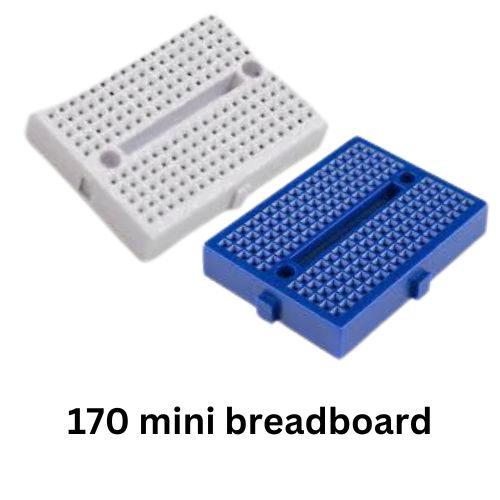A 170 mini breadboard is a compact, solderless prototyping board used for building and testing electronic circuits quickly and easily without the need for permanent connections. Here’s a detailed description:
🔹 170 Mini Breadboard Overview
1. Size & Layout:
-
Dimensions: Typically about 45mm x 35mm.
-
Total Tie Points: 170.
-
Layout:
-
Consists of 17 rows with 5 holes (tie points) per side (left and right), split by a central gap.
-
The central gap is designed to accommodate DIP (Dual In-line Package) components like ICs.
-
2. Connections:
-
Each row of 5 holes on either side of the gap is electrically connected.
-
The center divide means the board is effectively split in two for placing components like ICs.
3. Backside Adhesive:
-
Often comes with double-sided tape on the back, allowing it to be stuck on surfaces or larger breadboards.
4. Power Rails:
-
No dedicated power rails like in larger breadboards (e.g., 400 or 830 tie-point boards).
-
Power connections must be manually made using jumper wires.
5. Expandability:
-
Mini breadboards can snap together side-by-side to form a larger prototyping area.
🔧 Common Uses
-
Small projects and prototyping.
-
Arduino or Raspberry Pi connections.
-
Learning electronics.
-
Building compact modules or test setups.


Reviews
Clear filtersThere are no reviews yet.